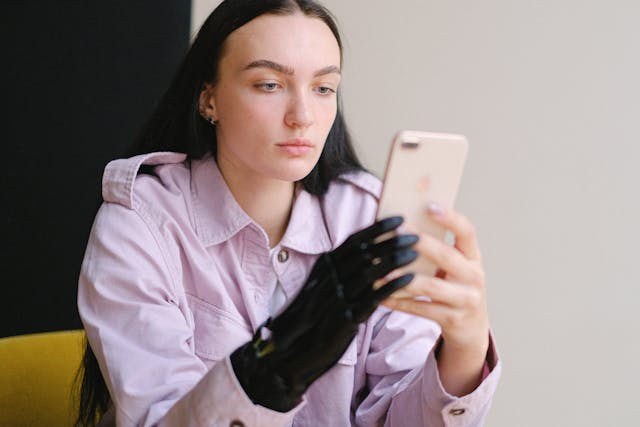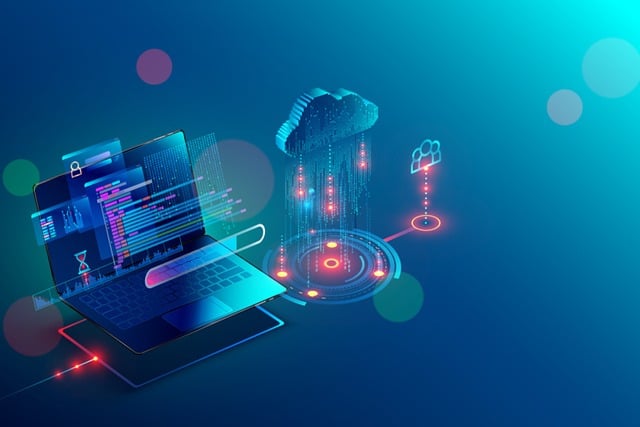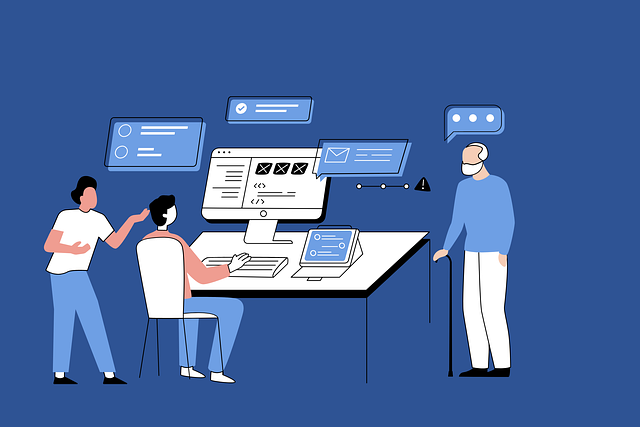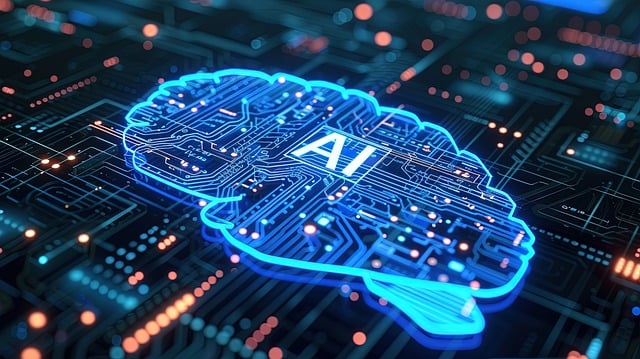Technology is transforming the way prosthetic limbs work, making them smarter, more adaptive, and highly personalized. One of the biggest breakthroughs in this field is cloud connectivity, allowing prosthetic devices to connect to the internet, AI-powered software, and real-time data analysis tools.
Cloud-connected prosthetics will redefine the user experience, offering automatic software updates, remote diagnostics, and personalized performance enhancements. These innovations will ensure that users have better control, improved comfort, and access to instant support when needed.
At Robobionics, we are committed to developing next-generation prosthetic solutions that integrate cutting-edge cloud technology. In this article, we explore how cloud-connected prosthetics will revolutionize mobility, adaptability, and independence by 2030.
1. What Are Cloud-Connected Prosthetics?
Cloud-connected prosthetics are smart artificial limbs that connect to the internet, allowing them to store, process, and share real-time data with AI systems, doctors, and users.
Unlike traditional prosthetic limbs, which rely on pre-set configurations, cloud-connected prosthetics use machine learning algorithms to continuously improve movement, comfort, and responsiveness. They can receive instant software updates, ensuring that users always have access to the latest improvements and enhancements.
By 2030, cloud-connected prosthetics will become the standard for high-performance artificial limbs, providing users with a seamless, personalized, and continuously improving prosthetic experience.
2. Real-Time Data Analysis for Better Performance

One of the biggest advantages of cloud-connected prosthetics is real-time data collection and analysis. These devices can track movement, muscle activity, and pressure distribution, providing valuable insights to users and healthcare professionals.
If a user is experiencing discomfort or inefficient movement, the prosthetic can automatically adjust settings or alert the user to make necessary changes. This ensures better posture, reduced strain, and improved long-term comfort. Additionally, AI-powered analytics can detect patterns of wear and tear, ensuring that users receive timely maintenance alerts before issues arise.
By 2030, real-time data tracking will help prosthetic users optimize their movement, reduce strain, and extend the lifespan of their devices, making everyday activities easier and more comfortable.
3. AI-Powered Adaptation: Smarter Prosthetics for Every Situation
Cloud-connected prosthetics will use AI-driven learning models to analyze user behavior and adjust movements accordingly. These smart limbs will recognize walking habits, grip patterns, and muscle signals, ensuring that movements feel more natural and intuitive.
For example, a cloud-connected prosthetic leg can detect changes in terrain and adjust its shock absorption, ankle flexibility, and step force in real time. A bionic hand can automatically adjust grip strength based on the object it is holding, preventing slips or damage.
By 2030, AI-driven prosthetics will be able to predict user needs before adjustments are even required, allowing for a seamless, highly responsive prosthetic experience.
4. Remote Monitoring and Troubleshooting: Faster Support for Users

A major challenge for prosthetic users is device malfunctions or discomfort, which often require clinic visits and manual adjustments. With cloud connectivity, users will have access to remote monitoring and troubleshooting, reducing the need for in-person appointments.
Prosthetists and technicians can analyze performance data remotely, detecting issues such as misalignment, socket pressure imbalance, or signal interference. Cloud-based diagnostic tools can pinpoint the exact cause of a problem, allowing users to receive expert advice and fixes instantly.
By 2030, remote prosthetic support will drastically reduce downtime, ensuring that users experience fewer disruptions and faster resolutions to any technical issues.
5. Personalized Prosthetic Adjustments with Cloud-Based Learning
No two prosthetic users are the same, and everyone has unique movement patterns and comfort preferences. Cloud-connected prosthetics will use adaptive AI to continuously learn and personalize settings for optimal comfort and efficiency.
For example, a user’s walking style, weight distribution, and pressure points can be analyzed over time. The prosthetic limb will gradually adjust its alignment, resistance, and flexibility to match the user’s natural movements. Similarly, an AI-powered bionic hand will learn how the user prefers to grip objects and refine its movements automatically.
By 2030, cloud-connected prosthetics will feel completely customized, offering a tailor-made experience that evolves over time without requiring manual adjustments.
6. Seamless Integration with Smart Homes and IoT Devices
Prosthetic users often rely on assistive technologies like smart homes and IoT (Internet of Things) devices for added convenience. Cloud-connected prosthetics will seamlessly integrate with smart home systems, voice assistants, and mobility aids.
Users will be able to control lights, appliances, doors, and security systems through their prosthetics, using gesture recognition or voice commands. AI-powered connectivity will allow prosthetic limbs to communicate with smart wheelchairs, fitness trackers, and medical devices, ensuring a comprehensive, automated living experience.
By 2030, prosthetics will no longer function as standalone devices—they will be part of an interconnected system that enhances accessibility and independence.
7. Cloud-Based Software Updates for Continuous Improvement

Traditional prosthetic technology remains static after manufacturing, requiring manual upgrades for new features. Cloud-connected prosthetics will receive automatic software updates, ensuring that users always have access to the latest improvements.
Developers will be able to release AI-driven enhancements for faster response times, improved motion control, and better power efficiency, which will be instantly available to users through cloud connectivity.
By 2030, prosthetic technology will continuously evolve, ensuring that users benefit from ongoing innovation without needing to replace their devices frequently.
8. AI-Powered Security and Privacy in Cloud-Connected Prosthetics
With increased connectivity comes the need for robust security and data protection. Cloud-connected prosthetics will be equipped with AI-driven cybersecurity protocols to protect sensitive biometric data and user privacy.
Advanced encryption, multi-factor authentication, and real-time anomaly detection will ensure that user data is safe from unauthorized access or cyber threats. AI-driven security systems will continuously monitor device activity, alerting users if any suspicious behavior is detected.
By 2030, cloud-connected prosthetics will be highly secure, ensuring that personal data remains private while allowing users to benefit from AI-driven improvements.
9. Expanding Accessibility: Making Cloud-Connected Prosthetics Affordable

One of the biggest concerns with high-tech prosthetic advancements is affordability. However, cloud connectivity will help make prosthetic technology more cost-effective and widely accessible.
Because updates, adjustments, and diagnostics can be managed remotely, users will experience fewer clinic visits and reduced maintenance costs. Additionally, AI-powered automation will streamline production and fitting processes, making prosthetic solutions more affordable over time.
By 2030, cloud-connected prosthetics will be available at various price points, ensuring that people from all backgrounds can benefit from next-generation mobility solutions.
10. Machine Learning and Cloud Analytics: Making Prosthetics Smarter Over Time
Cloud-connected prosthetics don’t just store and process data—they also use machine learning and cloud analytics to become smarter and more efficient over time.
Each time a user walks, grips an object, or interacts with their prosthetic, the cloud system collects movement patterns, muscle signals, and performance data. Over time, AI algorithms analyze this data to identify trends, detect inefficiencies, and suggest improvements.
By 2030, these advanced learning systems will allow prosthetic limbs to self-optimize, meaning that the more a person uses their prosthetic, the more it adapts to their unique needs, making movement more effortless and natural.
11. Cloud-Connected Prosthetics for Athletes: Performance Tracking and Optimization
Athletes using prosthetics require high precision, speed, and endurance, and cloud connectivity will take sports prosthetics to a whole new level.
With real-time motion tracking and AI-powered analytics, cloud-connected prosthetics will monitor stride length, force impact, energy efficiency, and balance, helping athletes optimize their training routines. These devices will also provide instant feedback, allowing users to adjust their movements for maximum performance and injury prevention.
By 2030, competitive and adaptive sports will be transformed by intelligent, cloud-enhanced prosthetics, giving athletes an edge in speed, agility, and overall endurance.
12. AI-Powered Virtual Assistants for Prosthetic Users

Imagine having a personal AI assistant dedicated to helping you use your prosthetic more effectively. With cloud connectivity, prosthetic users will have access to AI-powered virtual assistants that provide real-time guidance and support.
These assistants will help users by providing usage tips, monitoring performance, and giving voice-activated commands. If a user needs to make a prosthetic adjustment, check battery life, or troubleshoot an issue, the AI assistant will provide step-by-step guidance through voice prompts or a smartphone app.
By 2030, these AI-powered virtual assistants will ensure that prosthetic users get real-time, hands-free support, making prosthetic operation more intuitive and user-friendly.
13. Remote Rehabilitation and Therapy Through Cloud-Connected Prosthetics
Prosthetic rehabilitation is essential, but frequent clinic visits can be time-consuming and expensive. With cloud-connected prosthetics, rehabilitation programs will become remote and AI-driven.
Users will be able to access cloud-based rehab programs, where AI will guide them through daily exercises, track progress, and provide real-time feedback. If a therapist needs to monitor a patient’s rehabilitation journey, they can access cloud-stored movement data to ensure that exercises are being performed correctly.
By 2030, remote prosthetic rehabilitation will be the norm, allowing users to receive expert guidance without needing to leave their homes, leading to faster recovery and better long-term adaptation.
14. Cloud-Powered Social Connectivity: Connecting Prosthetic Users Worldwide

Cloud-connected prosthetics will also create a global network of prosthetic users, allowing individuals to connect, share experiences, and learn from one another.
Through cloud-based platforms and mobile apps, users will be able to exchange tips, discuss challenges, and access community-driven solutions. AI-driven discussion forums will also allow users to ask questions and receive instant guidance based on real-world experiences.
By 2030, prosthetic users will benefit from a strong, connected global community, where shared knowledge leads to greater independence, better device usage, and improved confidence.
15. Cloud-Connected Prosthetics in Disaster Response and Emergency Situations
In emergency situations such as earthquakes, floods, or accidents, cloud-connected prosthetics can provide life-saving assistance.
Prosthetics integrated with GPS tracking and emergency alert systems will be able to send distress signals if a user experiences a fall, sudden loss of mobility, or other emergencies. AI-powered health monitoring will detect abnormal heart rates, dehydration, or excessive strain, ensuring that users receive timely medical attention.
By 2030, cloud-connected prosthetics will be essential in disaster response efforts, ensuring that users remain safe and supported during emergencies.
16. The Role of Cloud AI in Battery Management for Prosthetics
Battery life is one of the biggest concerns for prosthetic users, especially those using high-tech bionic limbs. Cloud-connected prosthetics will feature AI-driven battery management, optimizing energy usage based on real-time activity levels and movement demands.
For example, if a user is walking long distances, the prosthetic will automatically switch to energy-saving mode during moments of inactivity. AI will also predict battery depletion times, sending users alerts and charging reminders.
By 2030, cloud-powered battery management will extend prosthetic lifespan, ensuring longer usage times and more reliable performance without frequent charging interruptions.
17. Cloud-Connected Prosthetics for Children: Growing with the User

Children who use prosthetics often require frequent replacements as they grow. Cloud-connected prosthetics will solve this challenge by tracking growth patterns and adjusting settings automatically.
AI-powered data analysis will detect limb growth trends, recommending timely adjustments and fittings without requiring frequent clinic visits. Cloud-based AI will also help optimize movement and balance for developing bodies, ensuring that children experience continuous comfort and functionality.
By 2030, smart, adaptive prosthetics for children will be a reality, allowing prosthetics to grow and evolve alongside the user.
18. Custom AI Prosthetic Training for Each User
Every prosthetic user learns at a different pace. Cloud-based AI will allow for personalized training programs that adjust based on individual progress and skill level.
If a user is struggling with grip control, walking posture, or muscle activation, AI-powered training modules will provide customized exercises, video tutorials, and interactive coaching. These programs will also offer real-time feedback, allowing users to improve faster and with more confidence.
By 2030, prosthetic learning will be AI-driven and cloud-based, ensuring that users receive real-time, personalized guidance from anywhere.
19. AI-Powered Security for Cloud-Connected Prosthetics
As prosthetics become smarter and more connected, cybersecurity will play a crucial role in protecting user data and device integrity.
AI-powered security systems will ensure encrypted cloud storage, biometric authentication, and real-time threat detection to prevent unauthorized access. Prosthetic users will have control over their data, with the ability to manage privacy settings and restrict access when needed.
By 2030, cloud-connected prosthetics will be equipped with top-tier security measures, ensuring that user data remains private, protected, and secure.
Final Thoughts: The Future of Prosthetic Technology is Cloud-Connected
Cloud-connected prosthetics will transform the user experience, making artificial limbs more intelligent, adaptable, and personalized than ever before. With real-time AI learning, automatic software updates, remote support, and seamless smart home integration, users will enjoy greater freedom, efficiency, and independence.
At Robobionics, we are committed to bringing the future of prosthetic technology to life, ensuring that users have access to the most advanced, cloud-powered solutions available.
If you’re ready to experience the next generation of prosthetic technology, book a free demo with Robobionics today and step into a world where cloud connectivity enhances mobility, comfort, and confidence!



